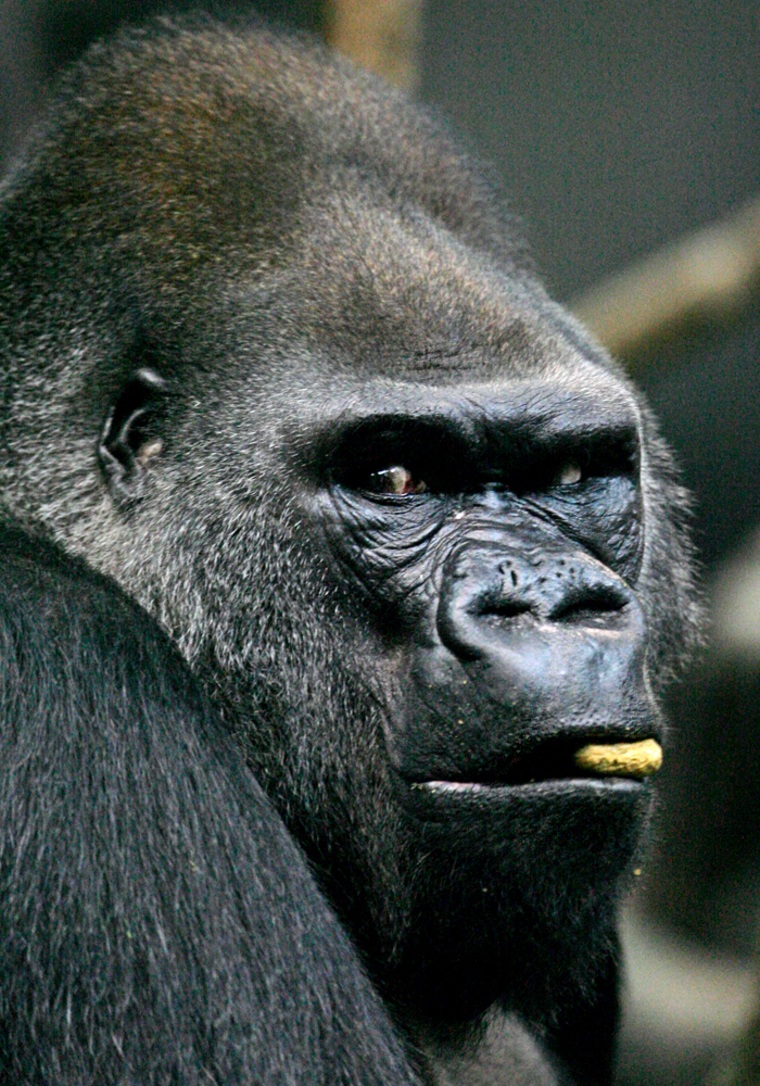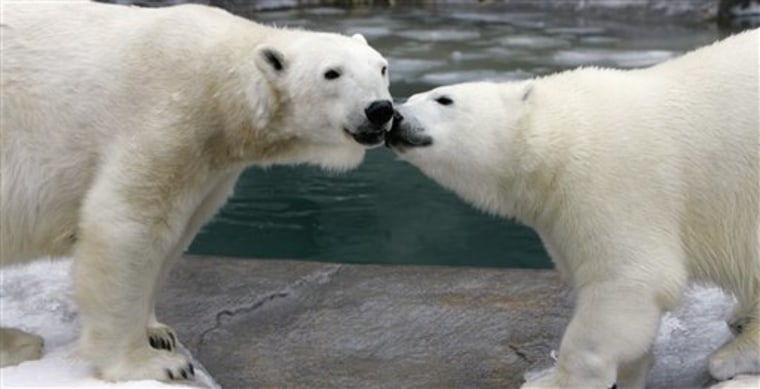Gorillas on Weight Watchers? Polar bears slurping sugar-free Jell-O shots? Giraffes nibbling alfalfa biscuits?
The days of letting visitors throw marshmallows to the animals are mostly history at zoos around the country, replaced by a growing focus on diet and nutrition that parallels the fitness craze in humans.
And thanks to mounting research on wild animals' food needs, today's zoo staffers are trying new feeding tricks to keep their lions and tigers and bears healthy and happy.
Avoiding obesity is part of the program.
Like humans, many zoo animals "like the good stuff. They like the sugary, high-fat food, and they're not moving as much as they're genetically programmed to," said Jennifer Watts, staff nutritionist at suburban Brookfield Zoo, west of Chicago.
Adding to the challenge is that food is used for training and to help keep animals psychologically stimulated. Too much "enrichment" can result in love handles, even on bears and gorillas.
So Watts is hatching a Weight Watchers-style plan for the beasts. The idea is to assign points to food and allow the animals a limited number of extra points a week.
Bare necessities
For example, molasses is a favorite treat of the bears and gorillas. Keepers often spread it around their enclosures to get them moving. Under Watts' plan, two cups of molasses might be worth two points, and granola bars — a favorite bear treat — would be worth one.

"We're trying to keep calorie intake within a limit ... "We are very vigilant about monitoring the animals' weight, because, like humans, it can lead to other health problems," Watts said.
Keepers at the Indianapolis Zoo are trying a different approach. Instead of fattening sweets, they offer sugar-free Jell-O to their polar bears, hiding the treats around the habitat.
"It tastes good, but is calorie-free," said zoo nutritionist Jason Williams.
Other tasty treats include low-salt crackers and specially prepared alfalfa biscuits offered to giraffes at some zoos, said veterinarian Chris Hanley from the Toledo Zoo. His zoo has an annual "Big Feed" day where visitors can feed animals veggies and other healthful snacks.
Many zoos help animals avoid couch potato-style eating by hiding bits of food around their enclosures to encourage food foraging similar to hunting in the wild.
Zoo nutritionists
At the Toledo Zoo, lions and tigers even get whole calf carcasses and wolves chow down on deer roadkill. The idea primarily is to provide a more natural, additive-free feeding method, but it does require a little more energy than slurping from a plate.
Some zoos have tried spreading the scent of prey around animals' habitats to get them up and moving. At the St. Louis Zoo, that's included dragging burlap bags filled with zebra feces around the lion habitat.
"There's not food, there's just 'eau de food," said the zoo's nutritionist Ellen Dierenfeld.

Zoo nutritionists first started to appear in the 1970s and '80s; now about 20 of the nation's 216 accredited zoos and aquariums have full-time nutritionists, and many others work with nutritionists as consultants.
Before zoo nutrition became a science, animals often got food similar to what was fed to domestic livestock or pets. That often resulted in malnutrition — even weak bones and fractures.
At Brookfield Zoo, Cookie the Cockatoo is a squawky 74-year-old who has been around since the days before exotic birds' dietary needs were well-understood.
"What Cookie liked to eat was seeds," which are high in fats and oils but have little bone-building calcium and phosphorus, Watts said. "For about 40 years all he ate were seeds," until a nutritionist was hired.
Animal osteoporosis
The result was osteoporosis, the same bone-thinning condition that affects millions of older humans.
Now the missing minerals are added to Cookie's water to keep his bones from getting weaker.
"One of the challenges of being a zoo nutritionist is that we cannot replicate an animal's natural diet," Watts said. "We can't go to South America and collect the figs or the branches or the beetles that an animal eats there."
Zoo nutritionists instead rely on researchers to "get samples of what animals eat, to observe what parts of plants they eat and what types of prey items that they might consume and bring that back to us so that we can analyze the diets," she said. "The best that we can do here at the zoo is mimic those nutrients"
But unlike human nutrition, which focuses on one species, zoo nutritionists have to design diets for many animals.
"Carnivore, herbivore, grass-eaters, ruminants ... nectar, fruit, blood, fish," Watts said. "Any kind of feeding strategy is represented here at the zoo and they all have different requirements and needs that have to be addressed."
